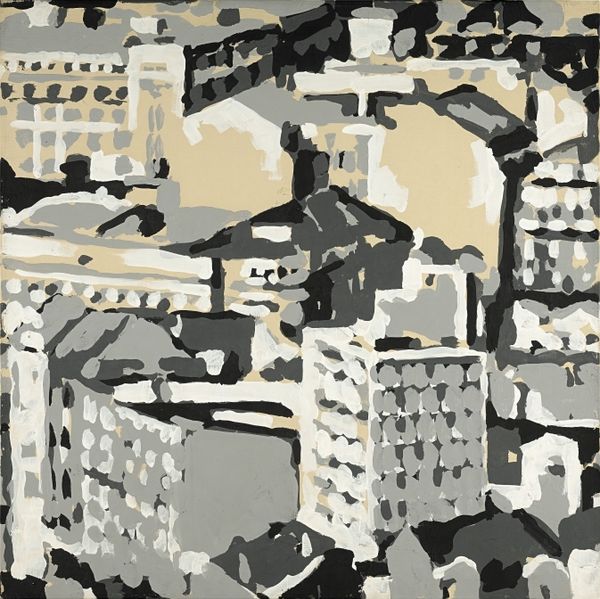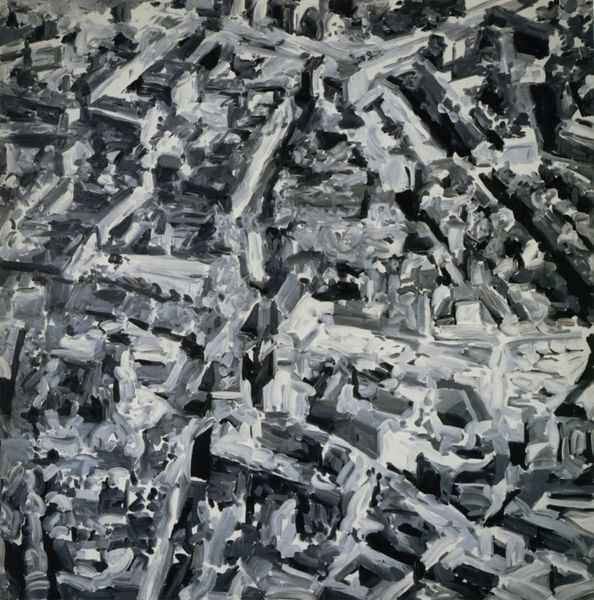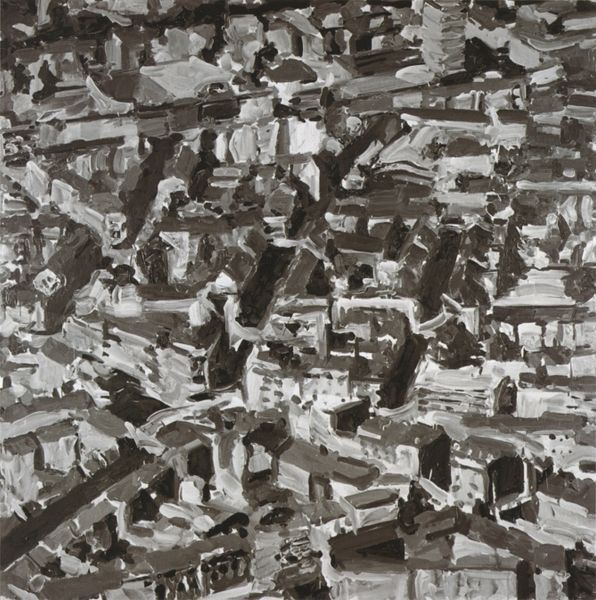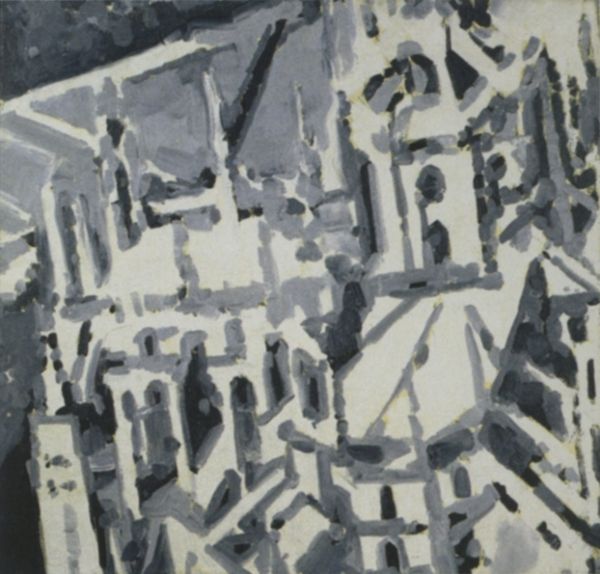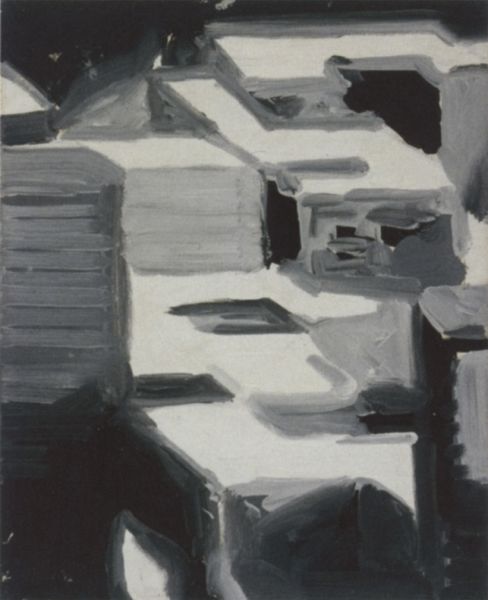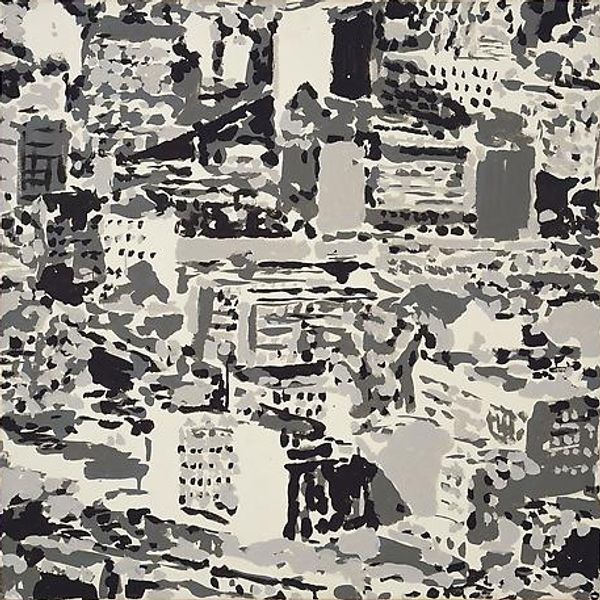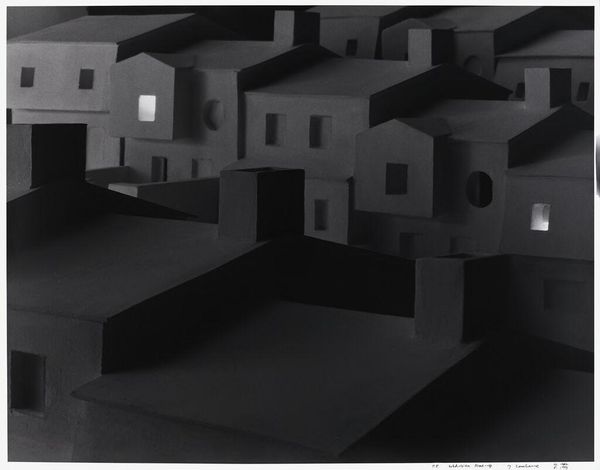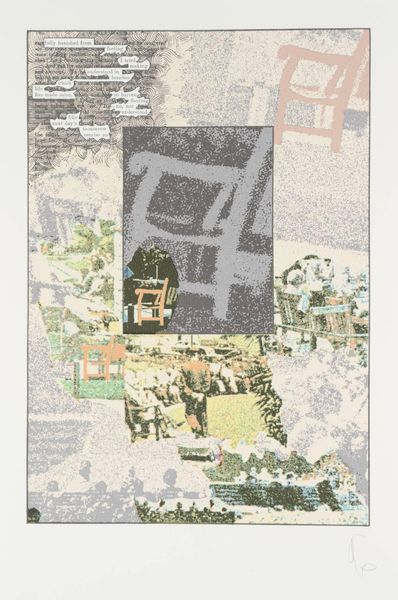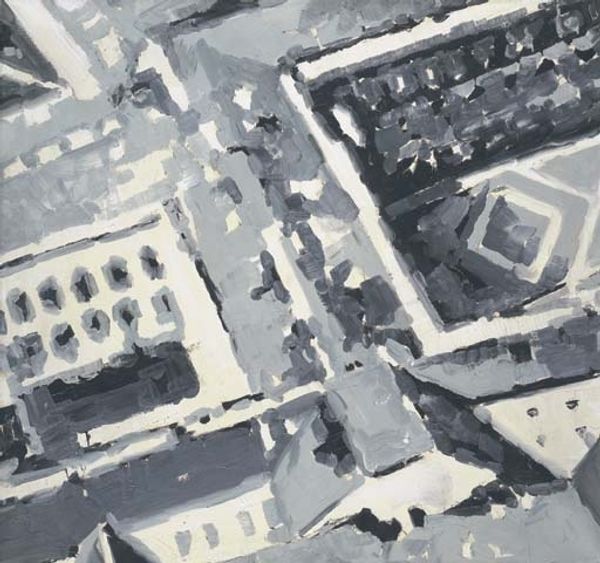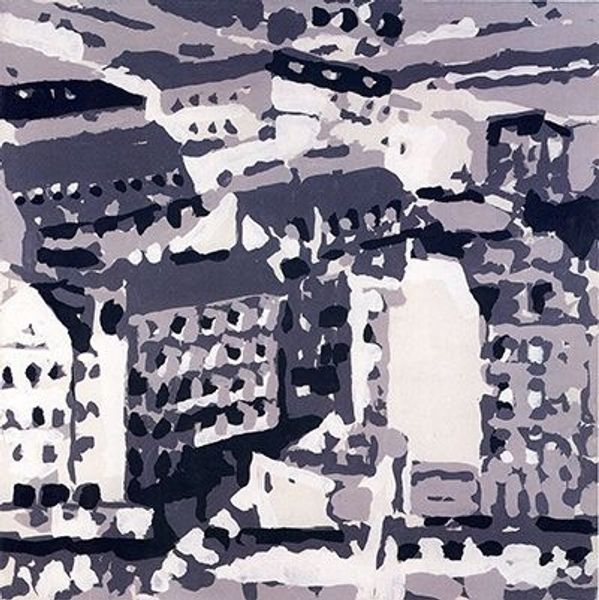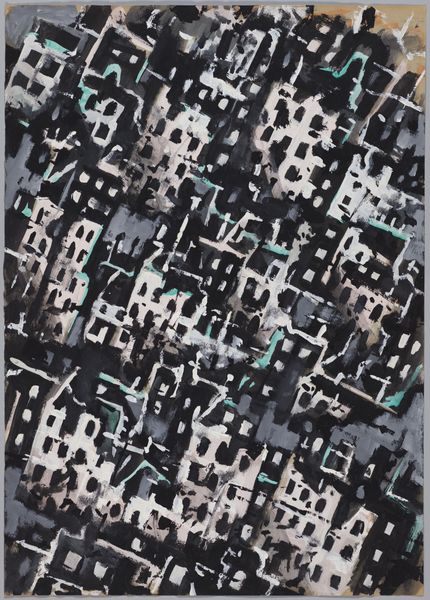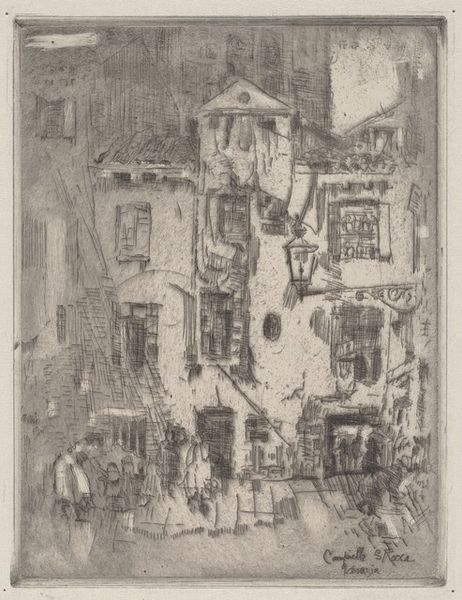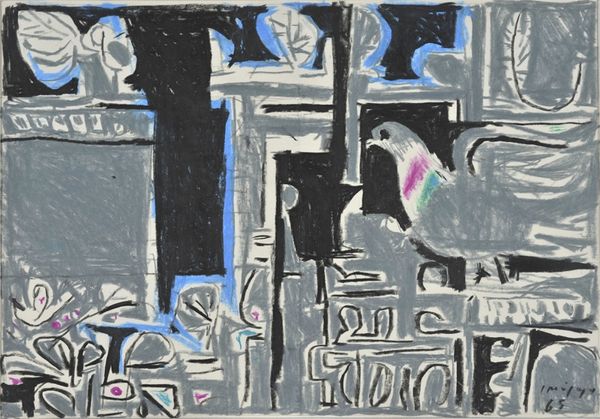
painting, acrylic-paint
#
rippled sketch texture
#
random pattern
#
wave pattern
#
painting
#
man-made pattern
#
textured surface
#
pattern
#
fine pattern
#
crosshatching
#
acrylic-paint
#
abstract pattern
#
organic pattern
#
capitalist-realism
#
abstraction
#
pop-art
#
intricate pattern
#
cityscape
Copyright: 2019 Gerhard Richter - All Rights Reserved
Curator: Gerhard Richter’s “Townscape P2” from 1968, rendered with acrylic paint, presents us with a captivating image. Editor: My immediate response is to the work's stark and rather chaotic visual language. It strikes me as fragmented, almost like looking at a cityscape through a shattered lens. Curator: Indeed. What's compelling here is the distortion of a recognizable subject, the city. Consider the cultural weight a cityscape carries - dreams of progress, human interconnectedness, and, sometimes, alienation. Richter plays with our visual expectations. It appears the city has lost clarity under capitalist realism, and now it looks more alienated to the modern man. Editor: I see that fragmentation manifest in the blocks of gray, black and white. They interrupt the possibility of easy legibility, and our sensemaking is now mediated through the structure, a semiotic field playing between mimesis and abstraction. Do you think that playfulness helps underscore the social commentary embedded in "Capitalist Realism"? Curator: I believe so. The painting emerged from the ethos of "Capitalist Realism." The lack of clarity is itself the social commentary that creates a feeling of the everyday life, especially under capitalism where the spectacle dictates our emotional and personal response to one another and objects that shape reality. The painting can itself represent capitalist alienation in its abstraction of a common city view, something to feel lost inside. Editor: Let's consider, as well, the materiality of the work—acrylic on canvas. How does the choice of materials impact our reading? Would it be as unsettling if it was painted using oil paint and brushes, instead? Curator: Good point. Acrylic paint lends itself well to the style where its artificial origin enhances the sense of detachment and impersonality. An artwork composed using oil paint would create depth, dimension, and detail not quite desired here. In "Townscape P2", acrylic makes its cultural symbolism clear; we view and treat ourselves and objects as surfaces, no real care, love or investment in something being permanent, but just temporary. Editor: Fascinating. The use of acrylic adds to the work’s impact. I came to the same insight through aesthetic properties whereas you arrived there by investigating what cultural memory has been revealed through visual and material signifiers. Curator: Indeed. Editor: Yes, together we've unearthed its symbolic depth through close readings.
Comments
No comments
Be the first to comment and join the conversation on the ultimate creative platform.
